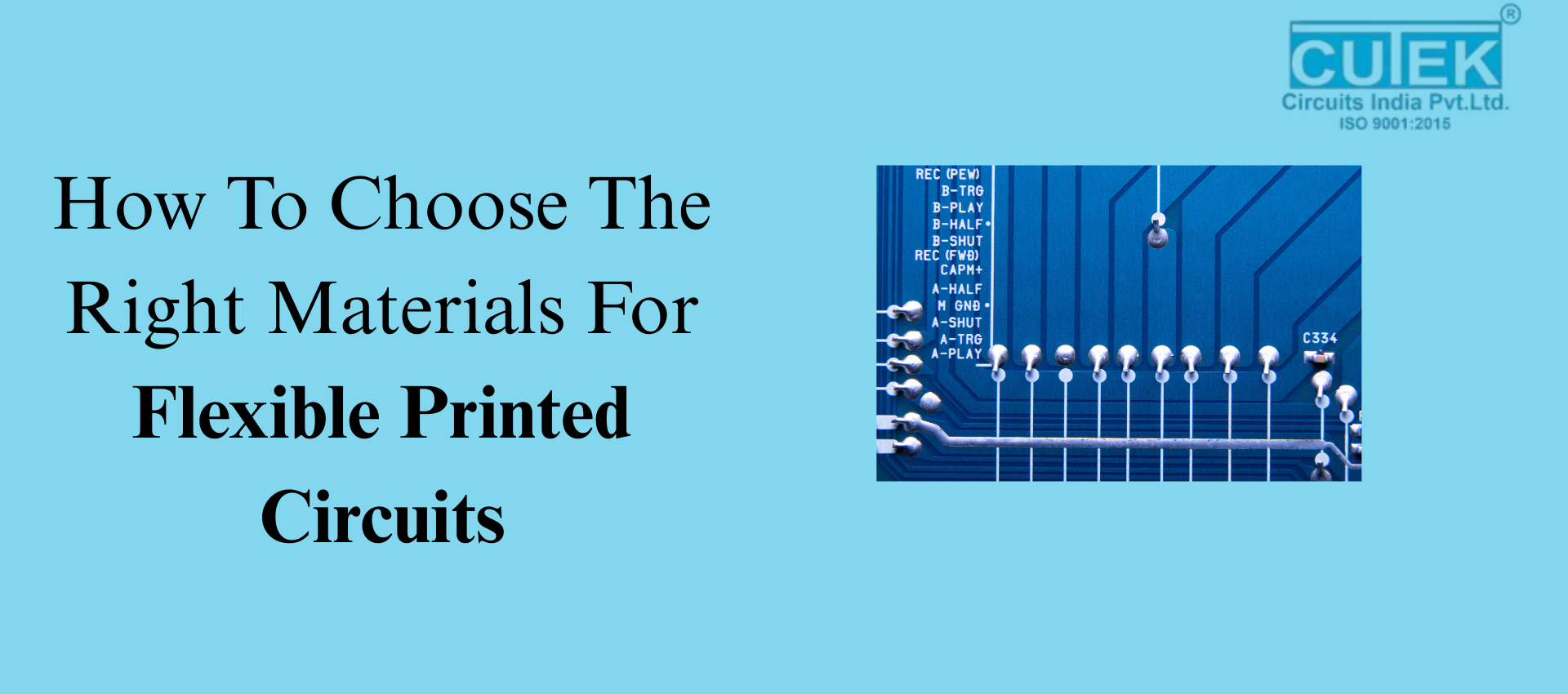Flexible printed circuits (FPCs) are a cornerstone of modern electronics, enabling compact, lightweight, and highly reliable designs in applications like wearables, medical devices, and aerospace electronics. Selecting the right materials for FPCs is critical because it directly impacts flexibility, durability, thermal performance, and electrical reliability.
In this blog, we answer the most important questions engineers and designers face when choosing materials for flexible printed circuits, helping you make informed decisions for your next project.
What Factors Should I Consider When Selecting Materials for Flexible Printed Circuits?
Choosing materials for flexible printed circuits requires a holistic approach, as every layer affects performance, cost, and reliability. Here are the key considerations:
Substrate Material
- The substrate is the base layer that provides mechanical strength and flexibility.
- Polyimide: High heat resistance, excellent chemical stability, ideal for harsh environments.
- Polyester (PET): Cost-effective, suitable for low-temperature applications, but less durable.
Tip: Choose substrates based on operating temperature, bend radius, and environmental conditions.
Conductors
- Copper is the standard conductor due to excellent electrical conductivity.
- Copper thickness: Thicker copper improves current capacity but reduces flexibility.
- Surface finishes: Gold, tin, or ENIG finishes enhance solderability and prevent corrosion.
Tip: Balance conductor thickness and flexibility according to circuit requirements.
Adhesives
- Adhesive-based FPCs: Easier to manufacture, provide mechanical strength.
- Adhesiveless FPCs: Thinner, more flexible, better for high-performance applications, but costlier.
Tip: Match adhesive choice with flexibility and durability needs.
Protective Layers (Coverlays)
- Coverlays protect circuits from moisture, chemicals, and mechanical wear.
- Materials must be compatible with the substrate and operating conditions.
Tip: Ensure coverlay material enhances reliability without compromising flexibility.
Environmental and Mechanical Requirements
- Consider bending cycles, vibration, temperature changes, and chemical exposure.
- High-performance FPCs, such as in automotive or medical devices, require materials that endure harsh conditions.
Industry Standards
- Follow IPC-2223 (Flexible Circuit Design) and UL certifications to ensure safety and performance.
- Certified materials reduce design risks and improve reliability.
How Can I Optimize Cost, Performance, and Flexibility in FPC Material Selection?
Balancing cost, performance, and flexibility is essential for successful FPC design. Here’s how to approach it:
Identify Critical Requirements
- Determine priorities: flexibility, thermal resistance, conductivity, or durability.
- High-performance electronics may require polyimide and high-quality copper.
- Cost-sensitive applications may use polyester substrates.
Hybrid Material Approaches
- Combine high-performance and economical materials strategically.
- Example: Polyimide in heat-critical areas, polyester in static regions.
Collaborate with Manufacturers
- Manufacturers provide material performance data, including thermal expansion, bend radius, and tensile strength.
- They can suggest advanced options like adhesive-free layers or specialized coverlays.
Testing and Validation
- Test prototypes for bending cycles, heat resistance, and electrical performance before production.
- Adjust materials if circuits fail under real-world conditions.
Long-Term Reliability
- Ensure compatibility of all materials.
- Poor material matching can lead to delamination, circuit breakage, or corrosion over time.
Selecting the right materials for flexible printed circuits is crucial for high-performance and reliable electronics. By carefully evaluating substrates, conductors, adhesives, coverlays, and environmental requirements, designers can create FPCs that balance flexibility, durability, and cost-effectiveness. Following industry standards and consulting with manufacturers ensures that your circuits meet both technical and operational expectations.
Contact Cutek Circuits
📞 Phone: +91 92255 24304 | +91 98237 84304 | +91 87930 34304
📧 Email: info@cutekcircuits.com | sales@cutekcircuits.com
🌐 Website: https://cutekcircuits.com

